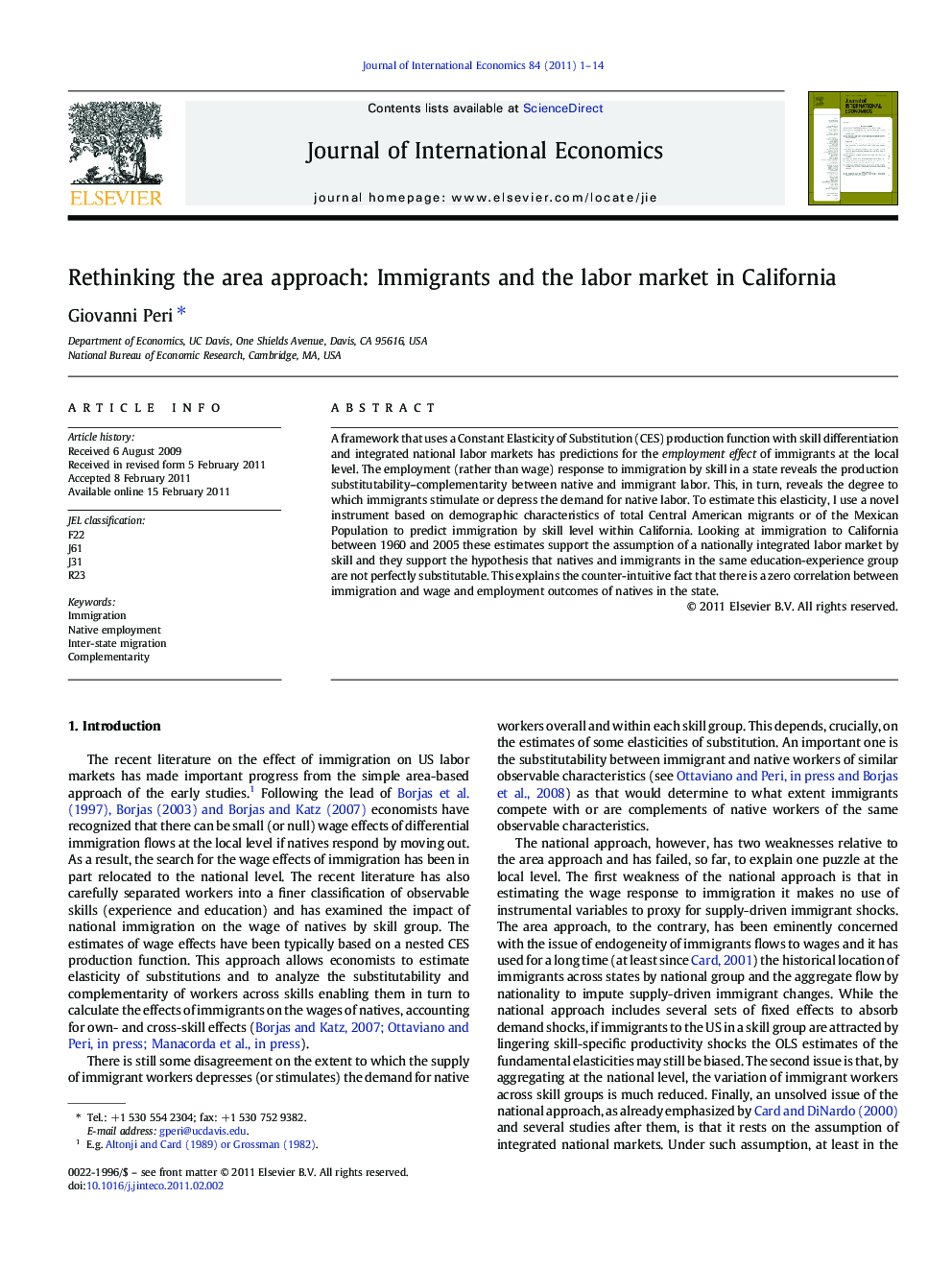| Article ID | Journal | Published Year | Pages | File Type |
|---|---|---|---|---|
| 963072 | Journal of International Economics | 2011 | 14 Pages |
A framework that uses a Constant Elasticity of Substitution (CES) production function with skill differentiation and integrated national labor markets has predictions for the employment effect of immigrants at the local level. The employment (rather than wage) response to immigration by skill in a state reveals the production substitutability–complementarity between native and immigrant labor. This, in turn, reveals the degree to which immigrants stimulate or depress the demand for native labor. To estimate this elasticity, I use a novel instrument based on demographic characteristics of total Central American migrants or of the Mexican Population to predict immigration by skill level within California. Looking at immigration to California between 1960 and 2005 these estimates support the assumption of a nationally integrated labor market by skill and they support the hypothesis that natives and immigrants in the same education-experience group are not perfectly substitutable. This explains the counter-intuitive fact that there is a zero correlation between immigration and wage and employment outcomes of natives in the state.
